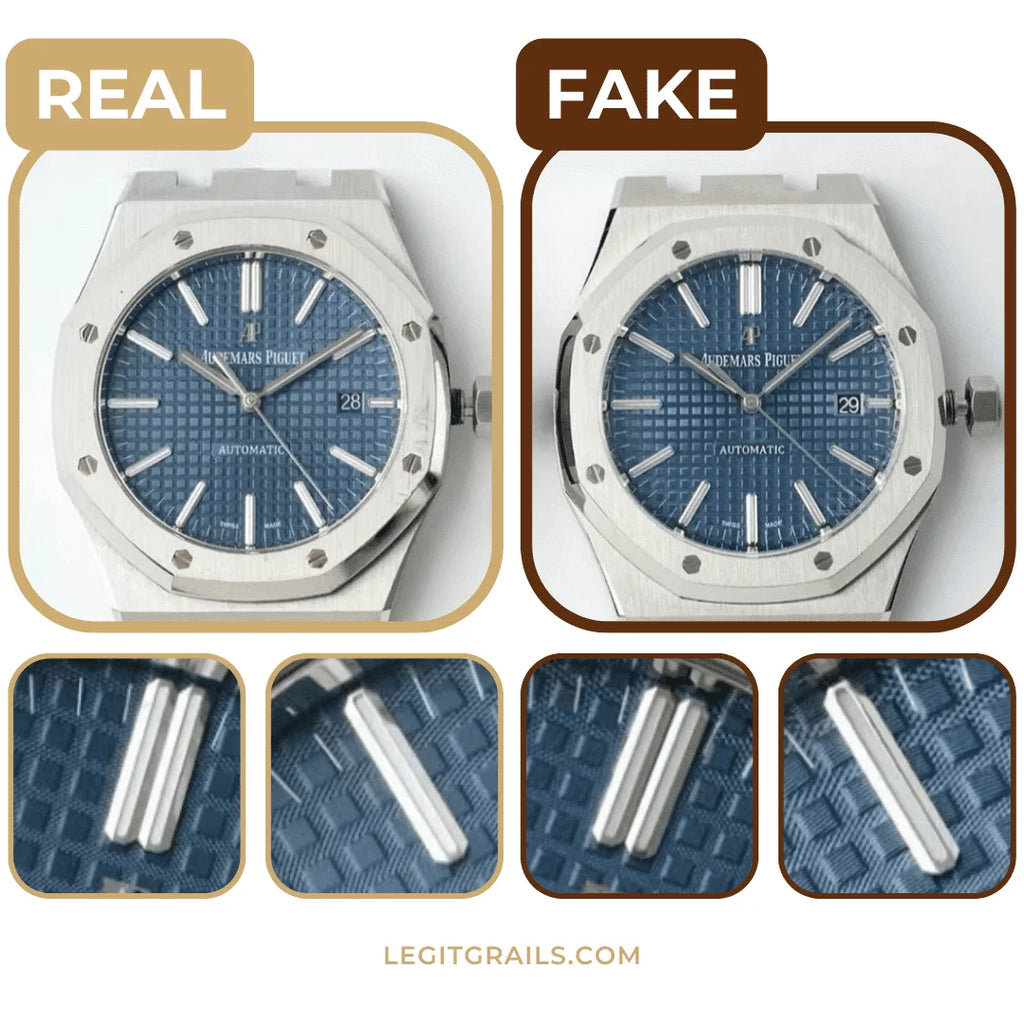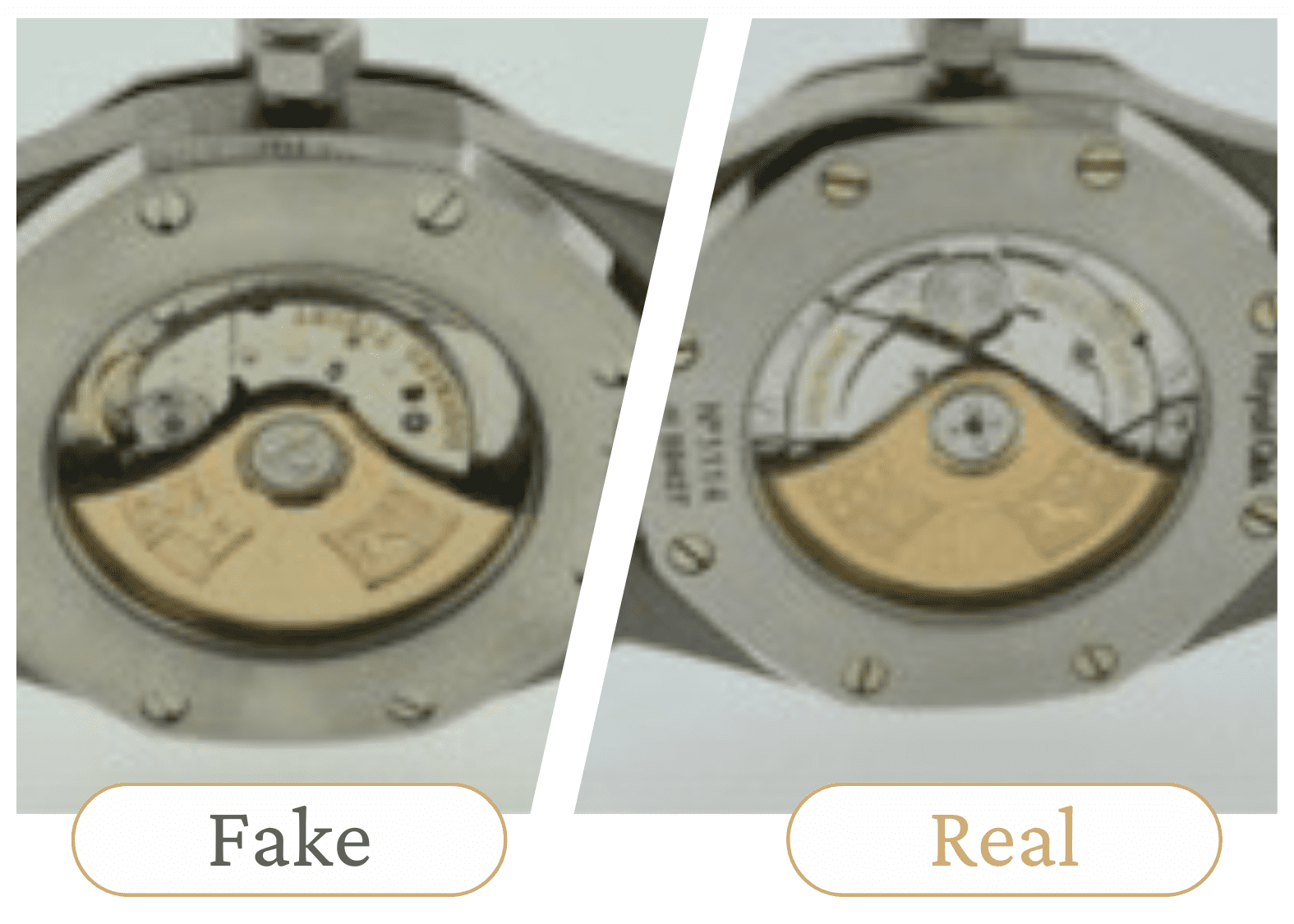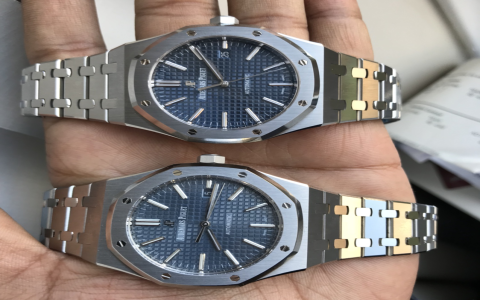Now, if you’re thinking about buying a fancy Audemars Piguet watch, or maybe you’ve already got one and you’re not too sure if it’s the real deal or just some cheap knockoff, let me tell ya, there’s a few ways to tell the difference. You don’t have to be a watch expert to spot the signs; it’s just a matter of knowing what to look for, and trust me, once you know, it’s as clear as day.

First things first, if you’ve got yourself a real Audemars Piguet, you best believe it’s got a serial number on it. That’s right, every single one of those high-end watches has a serial number, and it’s been that way since the 19th century! It don’t matter whether it’s a Royal Oak or a Royal Oak Offshore, you’ll find that serial number on the caseback. The real ones have it engraved deep and clear, you can read it just fine without any trouble. The fake ones, though, oh lord, they can’t seem to get it right. The engraving on fake watches is usually all shallow, blurry, or just crooked. That’s one of the easiest ways to spot a fake from the real deal.
Now, let’s talk about the watch face, especially the dial. If you’re looking at a genuine Audemars Piguet, everything on that dial is going to be sharp and crisp. The numbers and letters, the branding, it’s all perfectly done. The font’s just right, the thickness is consistent, and there’s no weird spacing. But those knockoffs? They can’t get it right. You might see some numbers that look all different in size, or the letters might be squished together or too far apart. It’s like trying to read handwriting from someone who didn’t learn to write properly. A real Audemars Piguet is neat, professional, and precise.
If you’re looking at the Royal Oak, the dial’s a big deal. That’s where the magic happens, as they say. The way it shines, the way the light hits it, it’s all part of what makes an Audemars Piguet so special. But when you’re holding a fake, you’ll notice the color and the shine just isn’t quite right. It might look too shiny, or maybe it’s too dull, or the texture is just off. You can tell something’s wrong, even if you don’t know all the fancy terms for it. A real one has a depth to it, something that’s hard to describe but easy to spot.

Speaking of quality, the real Audemars Piguet feels heavy. It’s made with materials that just scream luxury, like solid gold, steel, or titanium. When you pick it up, you can feel the weight and the sturdiness of it. But when you’re holding a fake? It’s all light, flimsy, like it might fall apart if you dropped it. The difference is night and day.
And don’t forget about the movement inside. If you’re able to get a peek at the inside workings of the watch (say, through a transparent caseback), you’ll see that the real deal is a marvel of engineering. The gears and springs are smooth and precise, moving like clockwork (pun intended!). But the fake ones? The movement is often jerky, or it might not even work properly. A real Audemars Piguet is made to last, and the quality shows from the inside out.
Finally, let’s talk about the price. Now, I know some folks think they can get themselves a cheap Audemars Piguet, but honey, if the price seems too good to be true, it probably is. A genuine Audemars Piguet will cost you a pretty penny, and I’m talking thousands of dollars. If someone’s trying to sell you one for a hundred bucks, well, you don’t need to be a genius to figure out that it’s fake. Real luxury costs real money. Simple as that.

So, what can we learn from all this? If you want a genuine Audemars Piguet, take your time and make sure you’re looking at the right details. Check that serial number, inspect the dial, feel the weight, and if anything looks or feels off, walk away. Trust me, there’s plenty of real ones out there, and they’re worth the investment. But don’t let yourself get fooled by those fakes—once you know what to look for, you won’t miss a thing.
Tags:[Audemars Piguet, Replica Watches, Real vs Fake Audemars Piguet, Watch Authenticity, Luxury Watches, Fake Watches, Serial Numbers, Watch Dials, Royal Oak Watches, Watch Engravings]





















